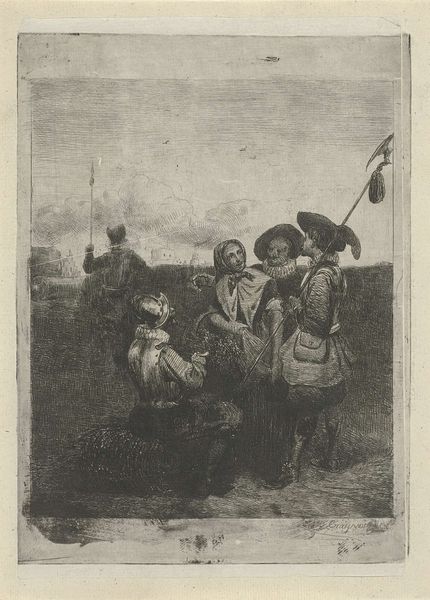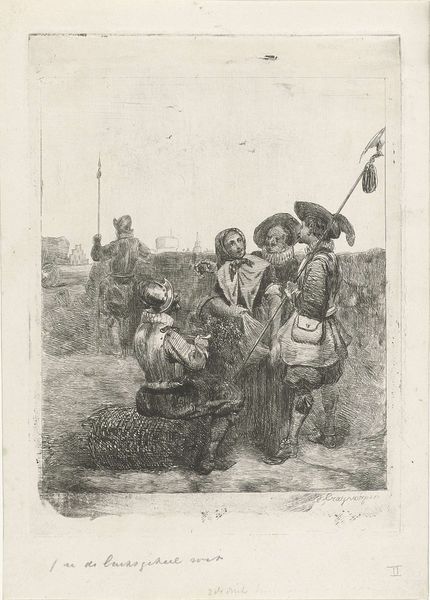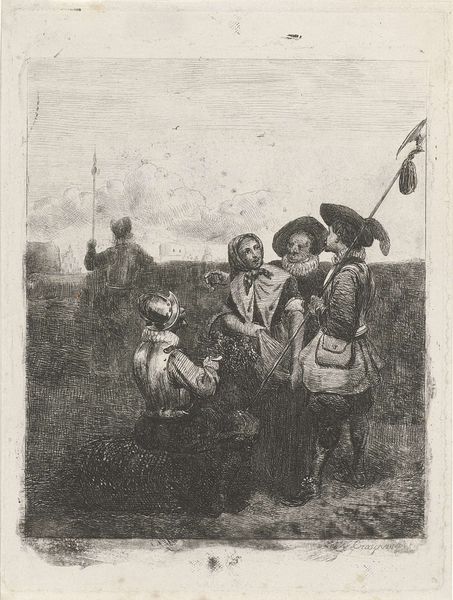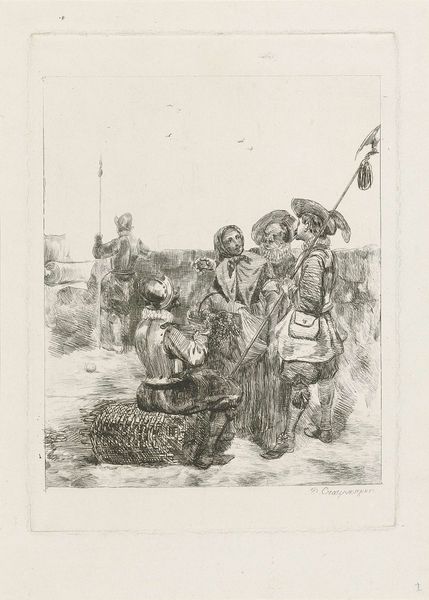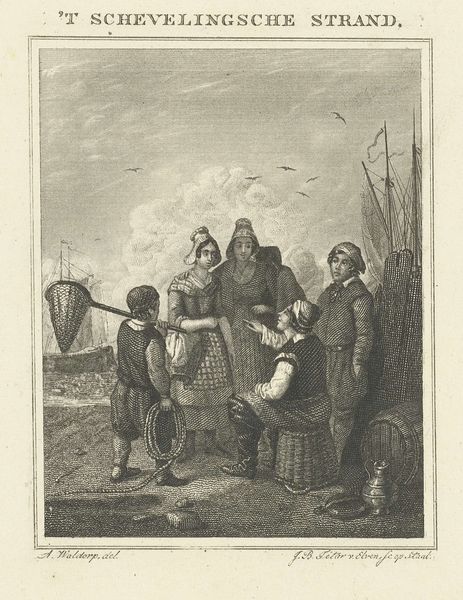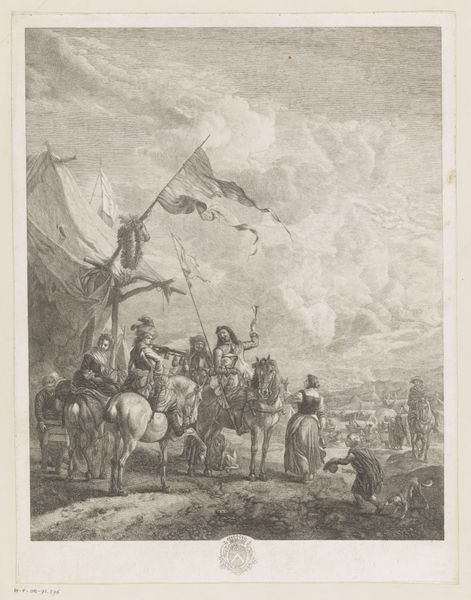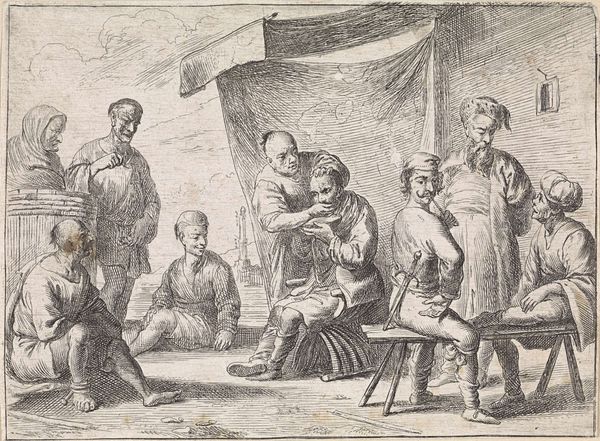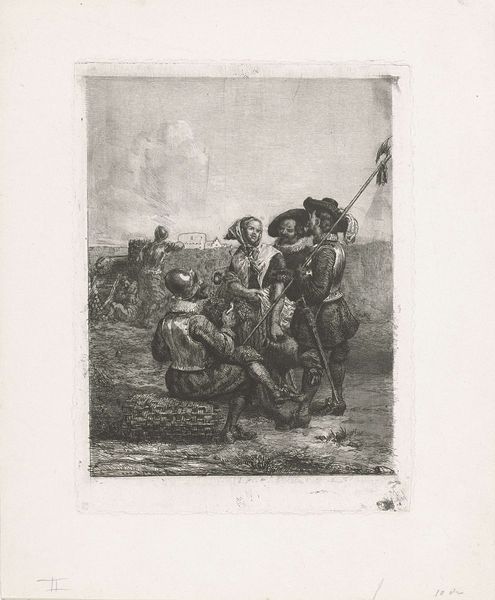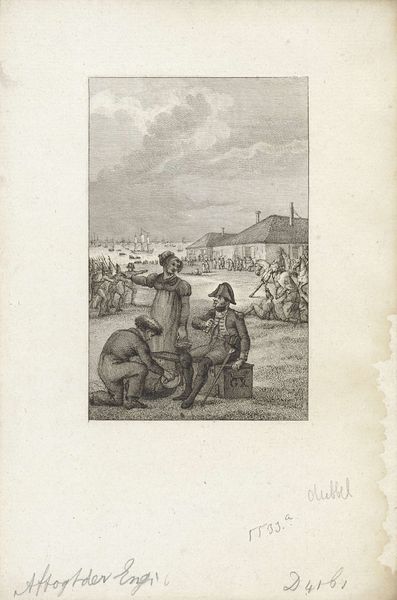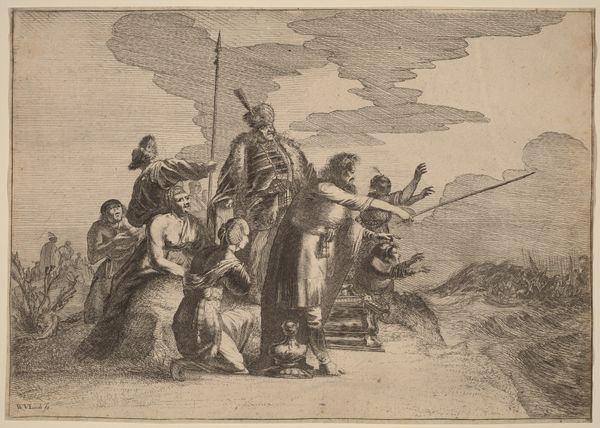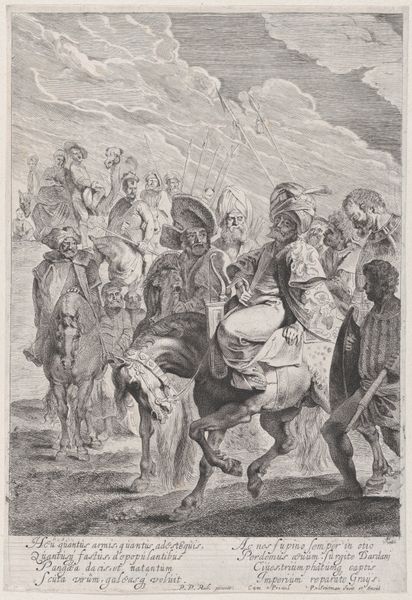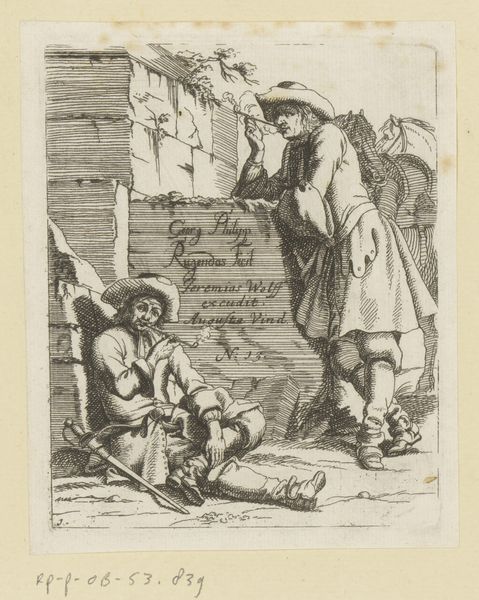
print, etching, engraving
#
narrative-art
# print
#
etching
#
pencil drawing
#
genre-painting
#
history-painting
#
engraving
Dimensions: width 147 mm, height 201 mm
Copyright: Rijks Museum: Open Domain
Curator: Welcome. Here we see Reinier Craeyvanger's etching, "Soldaten met een jong meisje," made sometime between 1822 and 1880. The work offers us a view of soldiers gathered around a young girl. Editor: It's stark. The muted tones amplify the weariness of the scene, despite what looks like a cluster of social interaction in the center. There’s a definite chill, perhaps literal, but I think largely atmospheric. Curator: Observe how the artist employed engraving and etching to produce varied tonal effects. Note the dense cross-hatching that defines the forms versus the relatively spare lines used to suggest distance and a vague background scene. Editor: But what kind of exchange is being shown? Is it transactional? I’m drawn to the inherent power dynamic. Look at the girl, caught in the throng, potentially vulnerable. The men, these soldiers, stand in clear contrast as figures of power, draped in signifiers of war. Curator: That power is certainly encoded in the visual language here. However, the picture departs from typical martial glorification. One soldier, distinct from the others, is kneeling, perhaps suggesting supplication, but he could simply be engaging in some sort of exchange. Editor: And what of her gaze, her downcast eyes? This etching reflects an era of conflict and military occupation and offers insight into women and girls’ positions within them. Is this a portrait of resilience, or of the everyday subjugation of women during wartime? It asks the audience to contend with questions about authority and protection, doesn't it? Curator: Certainly, by directing our attention towards these nuanced relationships between the figures, the artwork transcends its mere historical context to become an open-ended inquiry into human relations within structures of domination. The ambiguity enhances the intellectual engagement. Editor: Ultimately, Craeyvanger’s print invites us to interrogate the visual vocabularies we use to represent both violence and vulnerability, prompting reflection on historical imbalances and present-day struggles for social justice. Curator: A compelling argument that invites us to carefully observe and thoughtfully interpret the delicate network of signs that comprise this print.
Comments
No comments
Be the first to comment and join the conversation on the ultimate creative platform.
